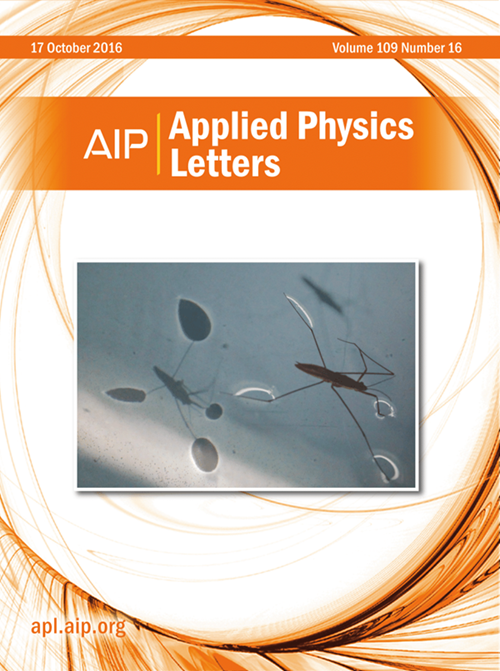Superconducting microwave oscillators as detectors for ESR spectroscopy
IF 3.5
2区 物理与天体物理
Q2 PHYSICS, APPLIED
引用次数: 0
Abstract
Microwave superconducting resonators are extensively studied in fields such as quantum computing and electron spin resonance (ESR) spectroscopy. However, the integration of superconducting resonators with feedback mechanisms to create ultra-low noise oscillators is a relatively unexplored area, and the application of such oscillators in ESR spectroscopy has not yet been demonstrated. In this work, we report the design, fabrication, and application of microwave oscillators based on superconducting resonators for ESR spectroscopy, illustrating an alternative way for the improvement of the performance of oscillator based ESR sensors. Specifically, ESR spectra are obtained by measuring the oscillator's frequency shift induced by the ESR effect as a function of the applied static magnetic field. The oscillators are composed of a single heterojunction bipolar transistor or high electron mobility transistor coupled with NbTi or YBa2Cu3O7 (YBCO) superconducting resonators. The fabricated oscillators operate at frequencies of 0.6 and 1.7 GHz and temperatures up to 80 K (for YBCO resonators) and 8 K (for NbTi resonators). The lowest measured frequency noise is about 9 mHz/Hz1/2 (−139 dBc/Hz), the best spin sensitivity is about 1×1010 spins/Hz1/2, and the best concentration sensitivity is about 3×1018 spins/Hz1/2m3. The approach proposed in this work should allow for significantly better spin and concentration sensitivities compared to those achievable with normal conductors, up to operating frequencies, magnetic fields, and temperatures, where superconductors exhibit substantially lower effective microwave resistance than normal conductors.求助全文
约1分钟内获得全文
求助全文
来源期刊

Applied Physics Letters
物理-物理:应用
CiteScore
6.40
自引率
10.00%
发文量
1821
审稿时长
1.6 months
期刊介绍:
Applied Physics Letters (APL) features concise, up-to-date reports on significant new findings in applied physics. Emphasizing rapid dissemination of key data and new physical insights, APL offers prompt publication of new experimental and theoretical papers reporting applications of physics phenomena to all branches of science, engineering, and modern technology.
In addition to regular articles, the journal also publishes invited Fast Track, Perspectives, and in-depth Editorials which report on cutting-edge areas in applied physics.
APL Perspectives are forward-looking invited letters which highlight recent developments or discoveries. Emphasis is placed on very recent developments, potentially disruptive technologies, open questions and possible solutions. They also include a mini-roadmap detailing where the community should direct efforts in order for the phenomena to be viable for application and the challenges associated with meeting that performance threshold. Perspectives are characterized by personal viewpoints and opinions of recognized experts in the field.
Fast Track articles are invited original research articles that report results that are particularly novel and important or provide a significant advancement in an emerging field. Because of the urgency and scientific importance of the work, the peer review process is accelerated. If, during the review process, it becomes apparent that the paper does not meet the Fast Track criterion, it is returned to a normal track.
 求助内容:
求助内容: 应助结果提醒方式:
应助结果提醒方式:


